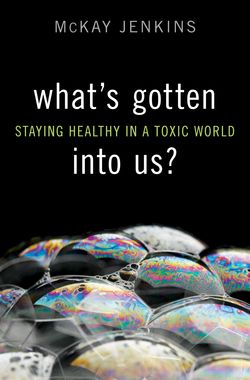
Sometime around World War II, synthetics exploded into our everyday lives. By some estimates, these materials—plasticizers, dyes, pesticides—have increased by a shocking 8,200 percent in the last quarter century. The upshot of that, of course, has been improved agriculture, economic wealth, and an abundance of cheap materials like Tupperware and Gore-Tex. The downside? According to McKay Jenkins, author of (Random House; $26), it's scarier than you think.
Jenkins, a Professor of English and Director of Journalism at the University of Delaware, links the proliferation of synthetics to a rise in ADD, autism, reproductive problems, and a host of cancers. “We wrapped our food in cellophane. We wrapped our legs in nylon. We gave ourselves over to vinyl,” writes Jenkins. “Synthetic chemicals are literally everywhere.” In our toiletries, cleaners, carpets, on our walls. In our clothes, and in our bodies. Banned PCBs are mixed in the snows atop Aconcagua, flame retardants in Arctic ice, petrochemicals in beluga whales in Canada.
Jenkins stumbled upon this story when doctors found a baseball-sized lump in his abdomen and hinted that the cause may have been a lifelong, cumulative exposure to everyday chemicals. So he and his wife headed to the local big box store to find the tainted wellspring, aisle by aisle, on a toxic safari. Each chapter explores a different realm of toxic invasion—the home, the tap, the lawn—peppered with anecdotes, studies, and horror stories. One woman Jenkins met suffers from “multiple chemical sensitivity,” an acquired illness that causes her to lose her balance and collapse when she encounters synthetics like fragrances and dryer sheets.
Jenkins doesn't always surprise (the BPA discussion seems dated), and his formula—examine a product like shampoo, fertilizer, or fountain water and explain how toxins have invaded—grows repetitive. Still, this is a worthy read that reevaluates our relationship with the things we put in and on our bodies. And Jenkins isn't all gloomy. We can make smart consumer choices, he says, and quash reliance on harmful products, thanks to a rise in green chemistry—the use of natural substances such as soy-based toners for printers and formaldehyde-free plywood. “People managed to live pretty well before synthetic chemicals,” he writes, “and we will continue to live pretty well long after they are gone.”
–Nick Davidson